Loki is often called the trickster god within Norse mythology.
But in actual fact Loki was not one of the Aesir gods, and while his tricks often put the Norse gods in difficult situations, there are no surviving Norse stories of him playing havoc in the lives of men.
So where do modern, Marvel inspired ideas about Loki end, and the real Loki of Norse mythology begin?
Who is Loki?
According to Norse mythology, Loki lived in Asgard alongside the likes of Odin, king of the Aesir gods, and Thor, god of Thunder.
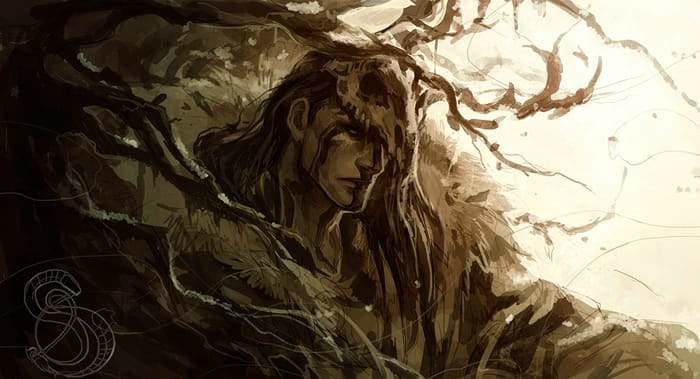
But Loki was not one of the Aesir gods, he was a giant.
Not that there is much to distinguish between the gods and giants in Norse mythology. Norse giants were not creatures of great stature, but rather being with powers quite similar to those of the Aesir gods, but rather than being dedicated to order, they embraced chaos.
This did not make Loki so different from the Aesir gods, many of which had giant ancestors. For example, Thor was the son of Odin with the giantess Jord, a being that symbolised the earth.

One way in which Loki is different from the Aesir gods is that he did not have an area of responsibility that he symbolised, such as war or fertility. While he was considered a trickster, his mischief was mostly a foil for the Aesir gods, and not for men.
In Old Norse the word ‘loki’ means knot or tangle, and he may have been considered responsible for some of the misfortunes that befell men, and therefore be a kind of trickster god, but there is little evidence for this.
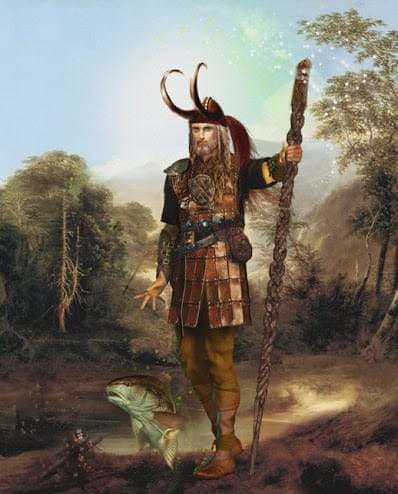
Loki’s symbol was the snake, and he was often represented by two snakes circling each other forming an S symbol, and biting the tail of the other.
In terms of ‘powers’, Loki’s main ability seems to have been to shapeshift, and he often used this to wriggle out of difficult situations, or trick someone into telling a secret.
Despite the fact that Loki caused many problems for the Norse gods, he was mostly welcome in Asgard, and almost always forgiven for his actions.
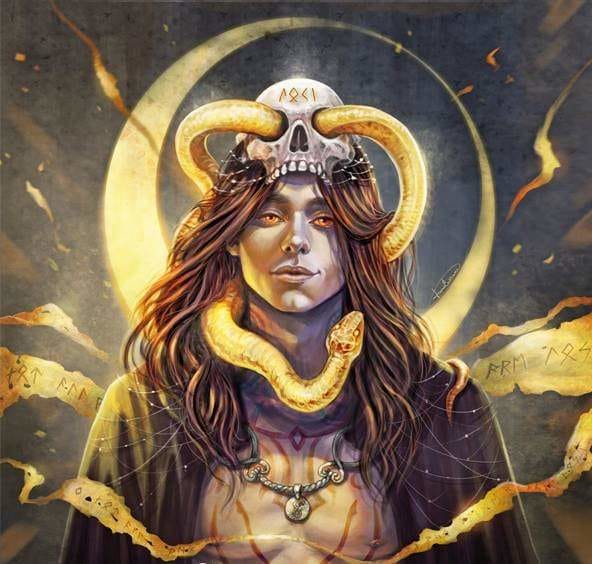
This seems to have been because of some old agreement between Odin and Loki. In one story of a feast during which Loki insults all the gods and they wish to expel him from the hall, Loki reminds Odin that the two had once mixed their blood and had agreed to always drink together.
This is an important way in which the Loki of Norse mythology differs from the Loki of the Marvel cinematic universe: he was not the brother of Thor, but a kind of blood brother of Odin himself.
Family of Loki
As already said, Loki was the son of giants, his parents were the giants Farbauti and Laufey. But Loki was also the father of many important beings in Norse mythology.

With the giantess Angrboda, Loki had three children. The Aesir gods so feared the potential chaos that could be caused by these children that they placed each of them in a place where they could do the least harm.
The first, the giantess Hel, was given dominion over the underworld of Helheim, where all souls that did not fall bravely in battle found themselves after death.
The second Jormungand, was a mighty serpent and the Aesir threw him into the sea surrounding Midgard, the world of men. There he grew to such a great size that he could surround the entire world.
Their third son was a might named Fenrir. He was chained up in Asgard using a magical ribbon made by the dwarves.
Each of these children of Loki and Angrboda are prophesized to have a role to play in Ragnarok, the Armageddon of Norse mythology, with Fenrir killing Odin himself, and Thor and Jormungand slaying one another in the final battle. As such, they are some of the ultimate symbols of chaos and destruction in Norse mythology.
Loki also had a wife Sigyn, who was probably one of the Aesir gods, and they had a son Nari. Loki was also the mother of Sleipnir, Odin’s eight-legged steed.
This was the result of Loki’s shapeshifting ability. According to the old Norse story, near the beginning of time an unnamed builder offered to build the fortifications around Asgard in exchange for the goddess Freya (who was very beautiful and seductive), the sun and the moon.
The gods agreed to this, but only if he completed the work within one season and with the help of no man. The man agreed on the condition that he could have the help of the stallion Svadilfari, and Loki convinced the gods to accept the deal.
The stallion helped the builder complete the work extremely quickly, and with only three days to go before the deadline it looked as though he was going to finish the work on time. The gods blamed Loki for putting them in this terrible situation of having to pay the agreed price, and they demanded that he ensure that the builder not complete his work.
In order to do this, Loki turned himself into a stunning mare, successfully distracting the stallion and delaying the work of the builder. This distraction also resulted in Loki’s pregnancy. It is hard to see Loki as the bad guy in this particular story, especially since the god’s not only went back on the deal, but Thor also killed the builder.
Myths around Loki
Loki features in many stories of Norse Mythology, usually creating problems that the Norse gods needed to solve. For example, on one occasion he assisted a giant in stealing the apples of eternal life that grow in Asgard and preserve the youth and vigour of the Aesir gods.
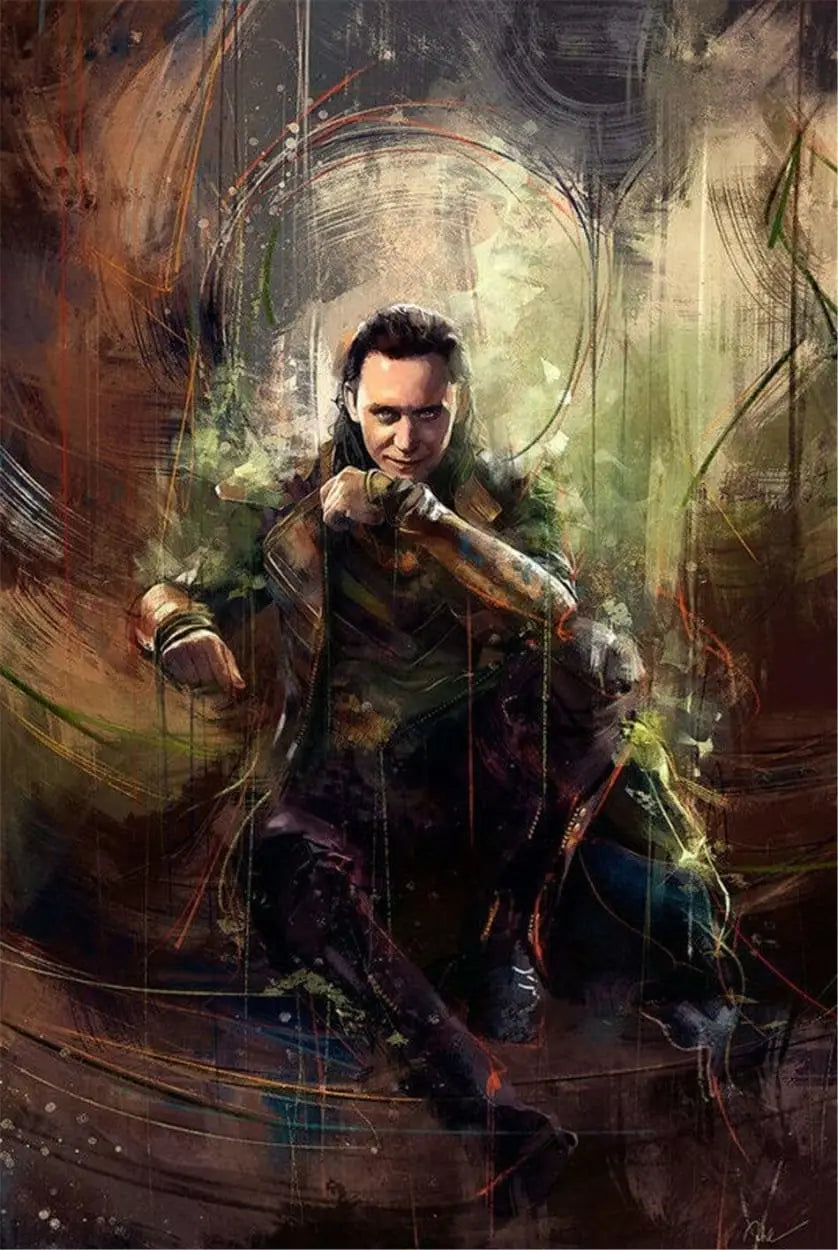
This left the gods old and wrinkled, and Loki was forced to retrieve the apples, and promise never to do something so reckless every again. A promise he failed to keep.
But Loki’s mischievous actions sometimes benefitted the gods. For example, in one Norse story, Loki cut off the beautiful golden hair of Thor’s wife Sif, which was probably meant to symbolise a golden harvest.
Enraged, Thor demanded that Loki replace the hair with something as fine, or suffer the consequences. In order to fulfil this demand Loki went to the dwarves and asked that they make a wig of fine gold threads for Sif, and enchant it so that it would grow on her head.
As well as procuring this, while with the dwarves Loki also procured Mjolnir, Thor’s mighty hammer, Gungnir, Odin’s enchanted spear, Draupnir, and a number of other treasures. All of these he gifted to the various Aesir gods.
Also, while Loki and Thor were not brothers, Loki also sometimes accompanied Thor on his quests. For example, when the king of the giants stole Thor’s hammer, Loki convinced Thor to disguise himself as Freya, whom the giant king desperately wanted to marry, in order to trick the giant into revealing the location of the hammer so that it could be retrieved.
Loki accompanied Thor to the home of the giant and helped convinced the giant that Thor was indeed Freya, allowing Thor to regain his hammer and slay the giant.
Loki, Balder and Ragnarok
Loki has a significant role in play in Ragnarok, the prophesized end of days in Norse mythology. His role begins long before the start of the apocalypse itself, with the death of Balder.

Balder was the son of Odin and Frigg, and was the most beautiful, noble and beloved of all the Norse gods. Desperate to protect her son from all harm, Frigg went around and secured an oath from every living thing in the universe that they would never hurt Balder, or assist in hurting him.
This basically made Balder invincible, something which amused the other gods, who would often throw weapons at Balder for the pleasure of watching them bounce off him causing no harm.
Loki, jealous of Balder and generally always looking for a way to make trouble, used his shapeshifting abilities to trick Frigg into telling him that she may have forgotten to secure the oath from the humble mistletoe plant.
Learning this information Loki immediately made a dart of mistletoe and tricked Balder’s blind brother Hod into throwing it at Balder as part of the gods’ regular game. It struck him dead immediately, much to the surprise of all the gods.
After Balder’s death, Odin beseeched Hel, Loki’s daughter and the keeper of the Underworld, to allow Balder to return to Asgard, explaining to the her that the world should not be robbed of this most beloved being.
Hel actually agreed to return Balder, but only on the condition that every living thing in the universe weep for him. And this they did, except for one giantess, who was Loki in disguise. As such, Balder was not able to return.
For his part in his tragedy, Loki was finally expelled from Asgard by the Aesir gods. They chained the villain to two rocks, hanging a poisonous snake above his head to drip painful poison onto his face.
Loki’s loyal wife Sigyn tries to protect Loki from this pain by catching the poison in a bowl, but when she must leave to empty the bowl, Loki is inflicted with the pain of the poison, and it is his shudders that cause earthquakes.
When the time for Ragnarok itself comes, it is prophesied that Loki will slip his chains, and will join the giant movement against the Aesir gods. During the battle it is foretold that he will engage Heimdall in hand to hand battle and that the two will slay one another.
Loki the Trickster
In a world that is not black and white, it is difficult to characterise Loki simply as a villain. What he does seem to be is someone who did not respect the order of life established by the Aesir gods, and who was more concerned with fun and his own desires that the needs of the greater community.
This is a dangerous character trait in the Norse world, where neighbours rely on each other, and therefore Loki symbolised an immense threat.
Unravelling the Norse Myth of Mischief and Intrigue
In the rich tapestry of Norse mythology, there exists a character who defies conventional classification – Loki, the trickster god. His exploits, intricately woven into the sagas and myths of the Norse people, have left an indelible mark on both ancient lore and modern popular culture. Let us embark on a journey through the realms of Norse myth as we delve into the enigmatic world of Loki, the master of deception.
Loki: The Norse Trickster
Loki is not your typical deity. He is a shape-shifter, a cunning manipulator, and the offspring of giants, a fact that sets him apart from the Aesir gods. Born to the giantess Laufey, Loki's destiny was bound to be unconventional from the start. His mischievous nature and penchant for chaos made him a captivating character in Norse mythology.
The Sons of Ivaldi: Loki's Mischief Unleashed
One of Loki's most famous exploits involves the theft of Sif's golden hair. In a fit of jealousy, Loki snuck into the realm of the Sons of Ivaldi, master craftsmen known for their unparalleled skill. With a silver tongue and a gift for persuasion, Loki convinced them to create not only a new head of hair for Sif but also other wonders, including the unbreakable spear Gungnir and a golden ship for Freyr. Loki's silver-tongued promises unleashed a chain of events that would shape the destiny of the gods and goddesses.
The Birth of Sleipnir: A Four-Legged Wonder
Loki's penchant for mischief reached new heights when he transformed into a mare to distract the stallion Svadilfari, preventing the completion of a massive wall around Asgard. This daring act led to the birth of Sleipnir, an eight-legged horse, and Odin's trusty steed. Loki's role as a mother, in this case, highlights his unpredictability and his ability to give birth to both chaos and wonder.
Loki in Popular Culture: From Poetic Edda to Tom Hiddleston
Loki's allure extends far beyond the pages of ancient texts. He has transcended time, making his mark on modern popular culture. His presence is felt in literature, film, and television, where he continues to captivate audiences worldwide. The portrayal of Loki by Tom Hiddleston in the Marvel Cinematic Universe has breathed new life into this iconic character, further cementing his status as a symbol of Norse mythology in contemporary storytelling.
Loki as a Symbol of Norse Mythology
In the Poetic Edda, a collection of Old Norse poems that provide insight into pre-Christian Norse beliefs, Loki emerges as a complex and multifaceted figure. He is neither wholly good nor entirely evil but embodies the essence of chaos and unpredictability inherent in the world of the gods. Loki's role in Norse mythology serves as a reminder of the intricate interplay between order and chaos, a theme that resonates with the human experience.
Conclusion: The Enduring Legacy of Loki
In the realm of Norse mythology, Loki stands as a symbol of intrigue, mischief, and the ever-present element of the unexpected. His exploits, from the birth of the world serpent Jormungand to the fateful events of Ragnarok, have left an indelible mark on the pantheon of gods and goddesses.
In both ancient lore and modern popular culture, Loki's character continues to fascinate and inspire, reminding us that even in a world of gods and giants, the trickster holds a special place in our hearts and imaginations. Loki, the enigmatic and ever-elusive, remains a symbol of the enduring power of Norse myth.
Why not read some of our epic blogs at odinscave.com

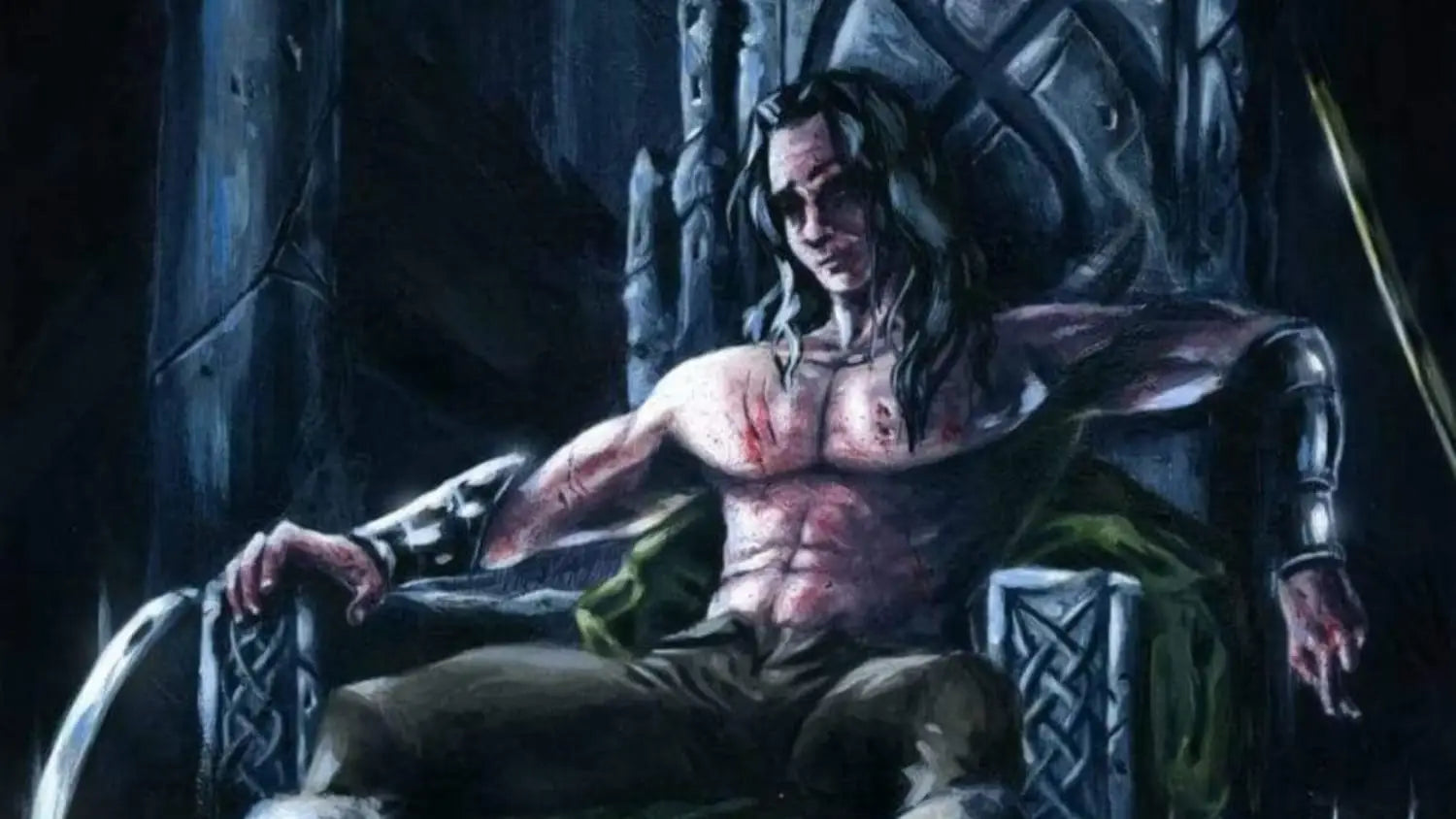
Share:
Balder | The Shining One
Njord God | Norse God Of The Sea |The Ruler of the Sea